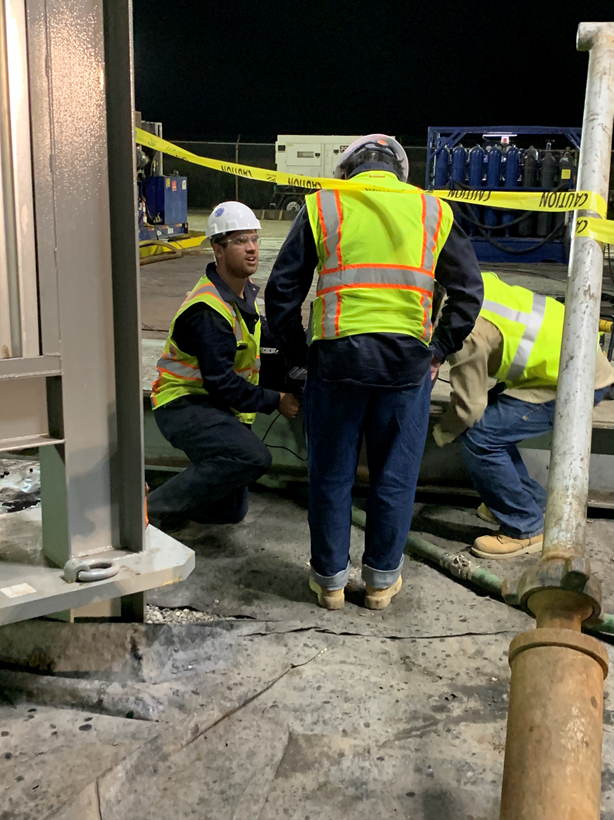Researchers: Linqing Luo, Peter Hubbard, Chien-Chih Wang, Tianchen Xu and Kenichi Soga
Client/Owner: California Energy Commission
Technology: distributed electromagnetic and fiber optic reflectometry methods
Wellbore integrity is of paramount importance to the safe storage of natural gas in the subsurface. Currently, wellbore integrity monitoring mostly relies on downhole logging tools, which are intrusive and expensive to conduct. We proposed to develop and field demonstrate an integrated suite of novel, autonomous, and real-time NGS wellbore integrity monitoring technologies based on distributed electromagnetic (EM) and fiber optic reflectometry methods. Our approach combines novel guided-wave EM Time Domain Reflectometry (EM-TDR) with Brillouin scattering based Optical Time Domain Reflectometry (BO-TDR) methods for distributed monitoring of NGS borehole conditions over the entire length. The combination of these two technologies provides comprehensive diagnostic signatures of the boreholes.
The fieldwork includes the Texas well borehole project and the McDonald Island underground gas storage project. Cables were attached to the inner tubing to monitor the strain and temperature in real-time. And we’re taking readings monthly for the longtime monitoring purpose in order to guarantee the well integrity.
Additional laboratory work is also carried out to validate our monitoring technology. The one we’re done in the PEER lab at Richmond Field Station is a high-pressure test for a corroded tubing where both strain and temperature cables were attached to detect the potential corrosion area. And the future test plan includes an axial loading test for a well sample (half in tension and half in compression) and a shear test for a casing sample to simulate the fault movement case.
